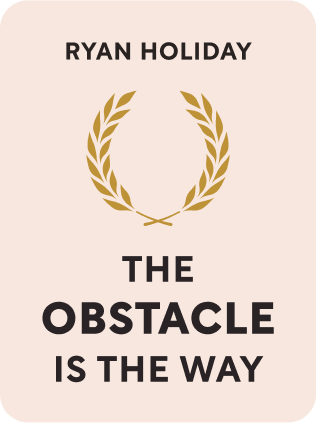

This article is an excerpt from the Shortform book guide to "The Obstacle Is The Way" by Ryan Holiday. Shortform has the world's best summaries and analyses of books you should be reading.
Like this article? Sign up for a free trial here .
What does Stoicism teach about acceptance? Isn’t acceptance the direct opposite of the Stoic approach to life?
In Stoicism, acceptance isn’t about surrendering to life’s misfortunes. Rather, it’s about finding the strength to resist arguing about how things should be and to instead accept them as they are. Once you do so, you can very likely use the problem or challenge to your benefit.
Read about Stoicism’s take on acceptance.
Stoicism and Acceptance: The Art of Acquiescence
There are things you can control and things you can’t. If you determine that you’re facing a problem that’s beyond your control, accept what you can’t change. Things happen: Shots don’t go in the basket, stocks nosedive, or shipments get lost.
In Stoicism, acceptance does not come from the place of surrender. Rather, it comes from the place of strength.
Stoics refer to accepting what you can’t control and moving on as the art of acquiescence. Acquiescence not passive—it requires strength and will to resist ruminating over how things could have been and to accept what you can’t change. You don’t have to like something to accept it—just face facts.
By accepting constraints as a fact of life, you can use them to become a better person. It’s natural to want to fight whatever is holding you back, but accepting your constraints helps you by:
- Pushing you to develop skills you wouldn’t have otherwise developed.
- Guiding you in a new direction, like traffic signals do.
- Teaching you lessons you wouldn’t have otherwise learned.
All constraints and obstacles contain benefits, but you have to accept the tradeoffs or costs. You don’t get what you wanted, but you get something else. Unfortunately, instead of appreciating what we’re getting, we often complain about what we missed out on.
Examples of Acceptance
Thomas Jefferson had political ambitions, but he didn’t like performing publicly, and he was a terrible speaker. He accepted this, and achieved political influence in a different and, ultimately, more effective way—through writing: he authored the Declaration of Independence.
Similarly, Thomas Edison and Helen Keller accepted physical limitations and accomplished great things. Edison was nearly deaf and Keller was blind and deaf, but like Jefferson, they found power in developing different abilities.
Embrace Whatever Happens
Once you accept what you can’t change, the next step is to embrace whatever happens, good or bad. Setbacks and disasters in life are inevitable—you have to face up to them, so you might as well do it with joie de vivre.
Loving whatever happens goes beyond acceptance—it’s telling yourself, “I’m excited about this” versus “I’m OK with it.” It isn’t belatedly acknowledging that things worked out for the best—it’s believing this from the beginning.
Finding and embracing the good within the bad is your source of energy. Embody the Stoics’ maxim: cheerfulness in all situations, good or bad.

———End of Preview———
Like what you just read? Read the rest of the world's best book summary and analysis of Ryan Holiday's "The Obstacle Is The Way" at Shortform .
Here's what you'll find in our full The Obstacle Is The Way summary :
- Why you should think of any obstacles as opportunities
- How Stoicism can show you the way to overcome challenges
- How Theodore Roosevelt's struggle with asthma prepared him for future struggles






